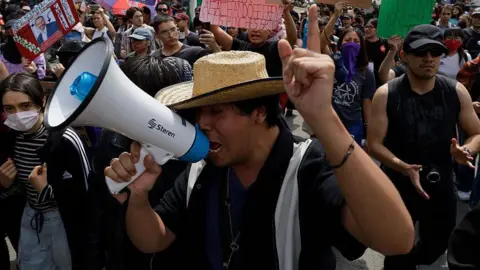The timing of the first of several recent anti-gentrification protests in Mexico City was no coincidence - 4 July, US Independence Day.
Demonstrators gathered in Parque México in Condesa district – the epicentre of gentrification in the Mexican capital – to protest over a range of grievances.
Most were angry at exorbitant rent hikes, unregulated holiday lettings, and the endless influx of Americans and Europeans into the city's trendy neighbourhoods like Condesa, Roma and La Juárez, forcing out long-term residents.
In Condesa alone, estimates suggest that as many as one in five homes is now a short-term let or a tourist dwelling.
Others also cited more prosaic changes, like restaurant menus in English, or milder hot sauces at the taco stands to cater for sensitive foreign palates.
But as it moved through the gentrified streets, the initially peaceful protest turned ugly.
Radical demonstrators attacked coffee shops and boutique stores aimed at tourists, smashing windows, intimidating customers, spraying graffiti and chanting 'Fuera Gringo!', meaning 'Gringos Out!'.
At her next daily press conference, President Claudia Sheinbaum condemned the violence as 'xenophobic'.
Most people who turned out on 4 July were motivated by personal stories of displacement similar to Erika Aguilar's, who recalls a shocking eviction notice after 45 years of living in the same apartment.
Despite the urban upsurge that continues to attract international tourists, locals feel they are losing their homes and community. Activists emphasize the need for more robust government actions to help longtime residents amidst the rising tide of gentrification.




















